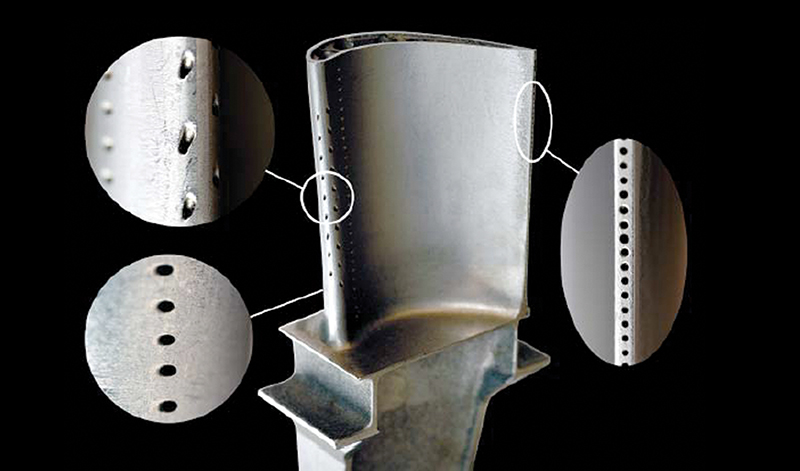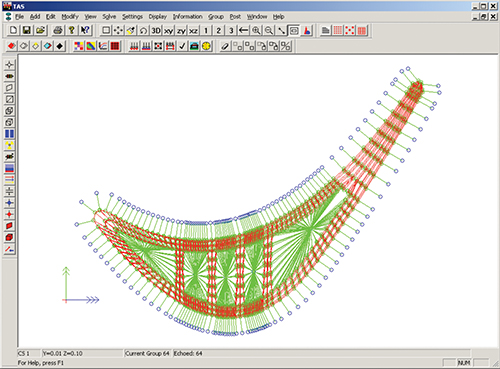
Easier Analysis With Rocket Science
Analyzing rocket engines is one of Marshall Space Flight Center's specialties. When Marshall engineers lacked a software program flexible enough to meet their needs for analyzing rocket engine fluid flow, they overcame the challenge by inventing the Generalized Fluid System Simulation Program (GFSSP), which was named the co-winner of the NASA Software of the Year award in 2001.
Most rocket analysis tools are either engine or turbopump specific, and some can only analyze one specific engine or perform one part of a test. Consequently, Marshall engineers often use multiple software tools and modules to complete their work. Frequently, however, the different tools cannot communicate, causing roadblocks during analysis. The engineers needed a software program that could plug into virtually any scenario and be operated with minimal training and computer-processing power. As a result, the Marshall development team for GFSSP focused on flexibility when developing the base code for the new software program.
NASA's GFSSP has been extensively verified by comparing its predictions with test data. The software uses a highly intuitive graphical user interface that allows engineers to construct very complex models in a very short time and allows users to model and view the results with a click of a mouse. With changing requirements and needs, the software has evolved to GFSSP version 3.0. This latest version contains a User Subroutine module, making it possible to develop specific applications of the code for various disciplines and customize those applications as needed. As a result, GFSSP has a wide variety of commercial applications in industries that require flow predictions in complex flow circuits.
Concepts NREC, Inc., of White River Junction, Vermont, incorporated GFSSP into its commercially available Cooled Turbine Airfoil Agile Design System (CTAADS). Specializing in all aspects of turbomachinery with applications ranging from aircraft engines to industrial pumps, the company developed the product in conjunction with Harvard Thermal, Inc., of Harvard, Massachusetts, to significantly reduce the total time and cost for designing cooled turbine airfoils.
Gas turbines used for aircraft propulsion must operate at high temperatures for thermal efficiency and power input. However, these extreme temperatures can cause thermal stresses within the turbine blade materials, necessitating that the blades be cooled by air extracted from the engine's compressor for safe and efficient operation. Since thermal efficiency decreases as a result of this extraction, engineers need to understand and optimize the cooling technique, operating conditions, and turbine blade geometry.
An increased understanding of the detailed hot-gas- flow physics within the turbine itself is necessary to design a system that most efficiently cools the turbine blades. Since blade life can be reduced by half if the temperature prediction is off by only 50 °F, it is crucial to accurately predict the local heat-transfer coefficient, as well as the local blade temperature, in order to prevent local hot spots and increase turbine blade life.
CTAADS assists users in need of this information by providing a systematic, logical, and rapid three-dimensional (3-D) modeling approach to cooling-system design for cooled axial turbine vanes and blades. The product is a fully integrated suite of independent software modules that supports the rapid generation of airfoil cooling-passage geometry and performs complete 3-D thermal analysis.
CTAADS's internal cooling airflow module, which generates and solves a one-dimensional fluid flow network representing the entire cooling configuration, is built upon GFSSP. Users can construct the fluid flow network with a Concepts NREC-developed graphical user interface. The network is then transformed into a customized input file for GFSSP, and the fluid network solver is a significantly modified and customized version of GFSSP.
The internal cooling airflow module gives users maximum flexibility in defining the fluid flow network. Users can control how many sections are needed to define each cooling passage. The fluid network solver is capable of producing turbine airfoil cooling passage airflow calculations requiring compressible flow with friction, heat addition, and area change; pumping due to blade rotation; and choked flow. Concepts NREC also added numerous resistance options specific to turbine cooling to GFSSP. All options have default correlations for total pressure loss and heat transfer coefficients.
Outside of the success Concepts NREC has found with utilizing GFSSP, other possible commercial applications for the versatile software program include heating ventilation and air conditioning systems, chemical processing, gas processing, power plants, hydraulic control circuits, and various types of fluid distribution systems. Best of all, GFSSP is easy to learn, despite its roots in rocket science. According to Marshall's GFSSP team leader Alok Majumdar, "A goal of ours was to make GFSSP so that an undergraduate engineering student can quickly become proficient with the software."

The Cooled Turbine Airfoil Agile Design System provides a systematic, logical, and rapid three-dimensional modeling approach for designing cooled turbine airfoils.

Turbine blades must be properly cooled for safe and efficient operation. This first-stage turbine blade has its cooling holes and drilled trailing edge highlighted.













